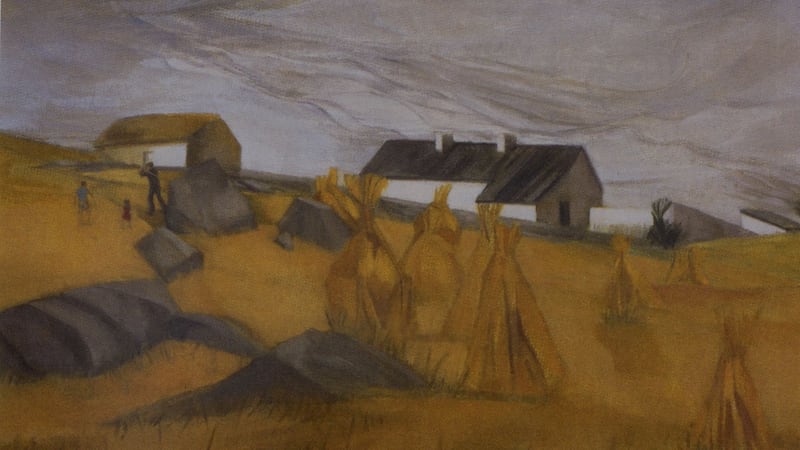Barbara Warren, who has died aged 91, was a highly regarded representational painter who exhibited regularly from the early 1950s. She brought her distinctively calm vision to still life, interiors, figure studies and landscapes, mainly around her home in Howth and in the West of Ireland, including locations in Connemara and on Achill. Her thoughtful, considered mode of stylised realism never became formulaic. Each painting was a new puzzle to be approached on its own terms. She was regarded as the last surviving link with a generation of Irish women artists who studied in France and effected a major shift in 20th-century Irish art.
As Julian Campbell observed in the catalogue for her retrospective at the RHA in 2002, the modest reticence of her manner should not be allowed to obscure her underlying courage, resolution and independence of character.
She was born in Dublin. Her father worked at the family printing business on Ormond Quay, her mother was from a Quaker family in Roscrea, Co Tipperary. She had a much older brother and sister (Nance, who died in 2007). Her parents encouraged her interest in art from an early age, sending her to art classes prior to her attendance at the French School in Bray and Alexandra College. But then, during the war years, her brother was killed in an accident and her father's health declined sharply. Unsettled, she travelled to Belfast and volunteered for the war effort and, from 1943, found herself working on maintaining Lancaster bombers at a training base.

After the war, she began studying at the National College of Art (now NCAD) but left after a year. Moving on to London she was granted a place at the Regent Street Polytechnic where her final-year teacher, painter Norman Blamey, was a constructive influence. Back in Dublin, she set off briefly to Carraroe to study landscape with Charles Lamb, then set up a studio in Dublin with her friend Anne King-Harman. It remained her base throughout the 1950s, but she also went to Paris with Margaret Gardyne and studied with André Lhote. "He encouraged us, as it were, to see away from realism into form building through colour," she wrote later. Judging by her work, she was also particularly taken by his juxtaposition of warm and cool colours. While she was judicious and precise in her use of colour, she did not shy away from some sharp effects.
There followed an amazingly fulfilling year for her during which, mostly alone, she travelled and worked throughout Spain
She also made exploratory visits to Spain and Italy, then, having been awarded a travel bursary, spent five months painting on Lettermullen in Connemara, where she befriended another painter, Anne Donnelly. There followed an amazingly fulfilling year for her during which, mostly alone, she travelled and worked throughout Spain, staying with friends along the way, including Dutch friends who lived on Ibiza. "It is notable how often works relating to dream, solitude and reflection originate in this period," Campbell writes. Indeed, the motif of the reflective, isolated figure remained constant for her and, as Campbell observes, even when two or more figures appear in a composition, they often seem emotionally apart, which prompted some observers to describe her work – unfairly – as cold and unfeeling.
In 1961 she married the artist William Carron. They moved to Howth and had a daughter, Rachael. When for some years motherhood took her away from painting, she found time to explore slate carving. She taught at the NCAD for 10 years from 1973, exhibited regularly at Taylor Galleries, and became a member of the RHA in 1989 and of Aosdána in 1990. She had a lifelong interest in drawing from the figure, and even when she was resident in a nursing home in her later years, she would travel to attend life-drawing sessions at the RHA.
She is survived by her husband William Carron, her daughter Rachael, her nephew John Chamney and his wife Josephine, and her great nieces and nephews.
Barbara Warren Born: August 28th, 1925 Died: May 10th, 2017










